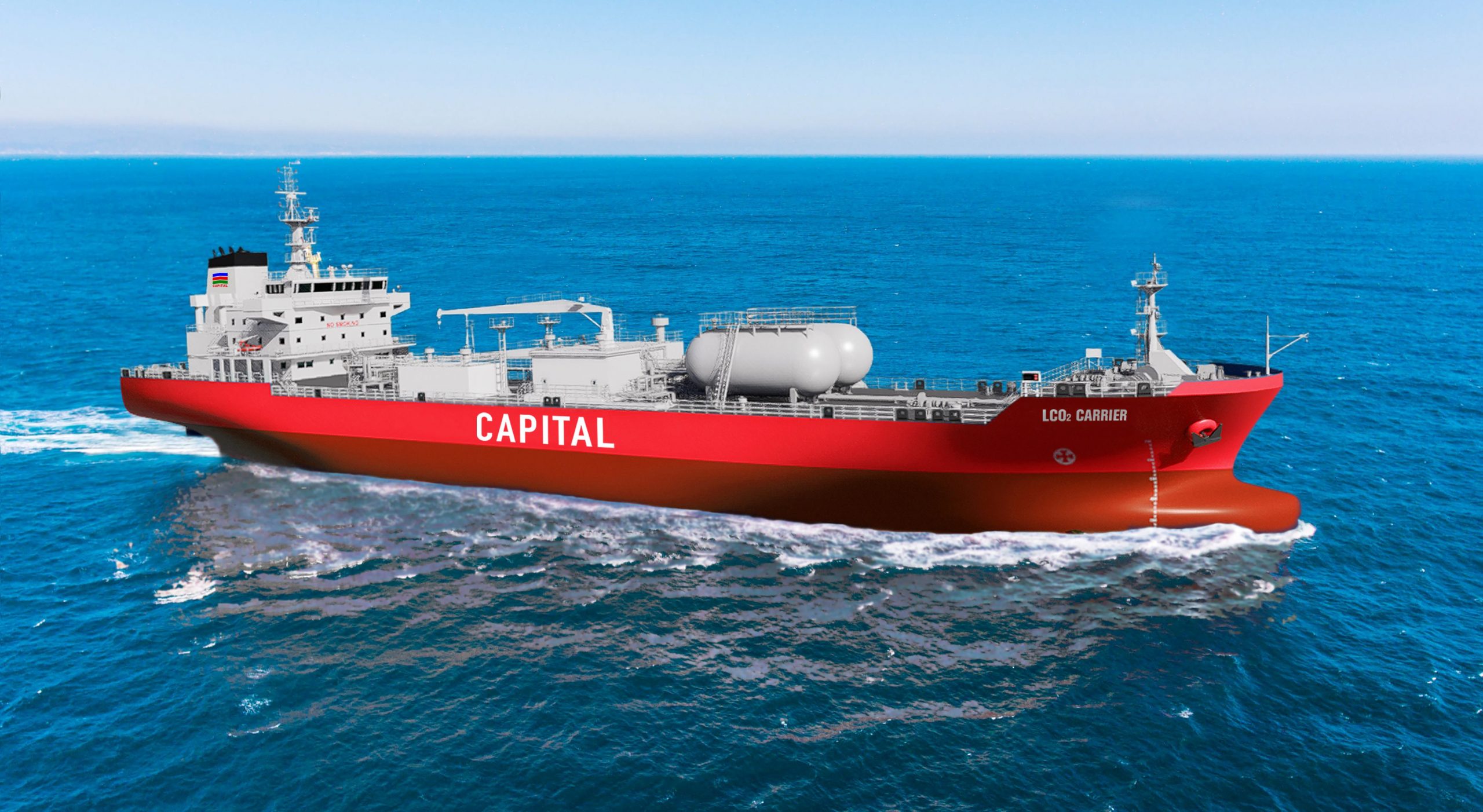ATHENS—Ship operators have a radical idea for industrial companies that are searching for ways to dispose of carbon emissions: Take the captured CO out to sea and bury it deep under the ocean floor.
But first, supercool the carbon emissions to temperatures so low that they become a liquid.
HD Hyundai Heavy Industries, the world’s largest shipyard, and Greece-based shipowner Capital Product Partners have designed a specialized vessel to carry liquefied CO. They envision such ships transporting their cargo to depleted offshore oil-and-gas wells, where it would be pumped in and entombed for permanent storage. Capital Product Partners signed a deal for four such ships, to be delivered in 2025 and 2026, that together cost more than $300 million.
“Ships move everything from oil to our furniture, clothes and toothpaste. Now they’ll move our emissions, which is in effect waste management,” said Jerry Kalogiratos, chief executive of U.S.-listed Capital Product Partners, which operates more than 100 cargo vessels.
The strategy still faces unknowns on its safety and environmental impact, as storing large volumes of CO under the seabed long-term hasn’t been tested and research is inconclusive on the effects if it escapes.
In some countries, big corporate emitters must pay taxes for their CO discharges, which they try to minimize by trapping them before they hit the atmosphere. This leaves companies with millions of metric tons of CO that they need to store.
In some areas, inland facilities for storing captured CO, such as depleted oil wells, are gradually running out of room and becoming increasingly expensive, prompting emitters and cargo-ship owners to look for an offshore solution.
A typical voyage of the CO-carrying ship, which will have a reinforced hull and special tanks, would start at a terminal with gas-liquefaction facilities. Cooled to minus 50 degrees Celsius (minus 58 Fahrenheit), carbon dioxide becomes a liquid more than 600 times denser than gas, enabling the transportation of large volumes. The vessels are built to each move up to 25,400 metric tons of CO per trip, according to Capital Product Partners.
Liquefied natural gas has long been transported by ship, but liquefied carbon dioxide is heavier than LNG and moved under higher pressure and temperatures, requiring different storage tanks and overall ship design.
The ships would take their cargo of liquefied CO to terminals in Northern Europe where it could be pumped into inland oil wells through a series of pipes. Or, they would head out to sea, where they would use the pumps in offshore rigs to transfer the CO into disused offshore oil-and-gas wells and designated caverns under the seabed.
The vessels will be fitted with aft and bow thrusters to make them more maneuverable and keep them steady in high seas.
They will also capture their own emissions or burn ammonia that doesn’t emit carbon. During loading or unloading, they will plug into power sources onshore to minimize fuel consumption. Capital Product Partners said that the overall volumes of carbon emissions destined to be buried will be multiple times higher than the emissions produced in liquefying and transporting the CO by sea.
Capital Product Partners said it invested in the vessels after talks with some of its biggest clients, including major energy companies, utilities and commodity traders. Kalogiratos said he is convinced that seaborne CO transportation will take off in coming years as many areas lack inland wells to store the emissions.
The global carbon-capture, utilization and storage market is expected to grow to $5.2 billion by 2026 from $2.6 billion in 2021, at a compound annual growth rate of around 15%, according to Boston-based BCC Research. In the European Union, carbon storage is expected to rise to 80 million metric tons of CO in 2030 and reach at least 300 million metric tons in 2040, according to the EU Commission.
Cement and building materials companies such as Heidelberg Materials and Holcim, chemical giants like BASF, and energy companies including BP, Denmark’s Ørsted and Norway’s Equinor plan to build their own carbon-capture plants. They aim to dispose of their emissions inland and offshore, for instance in undersea caves off Norway and in the North Sea, potentially using the specialized ships.Some big EU companies plan to build their own berths to load CO waste for transport. Smaller ones could use a network of pipelines with access to terminals.
Other big polluters such as Japan and South Korea might also make plans to store CO under the waters off Australia, Indonesia and Malaysia, according to industry executives in those countries.
The concept still faces hurdles. Storing CO under the seabed hasn’t been conclusively tested, and inland storage is still at a relatively early stage. Geologists and naval architects of offshore rigs say one risk associated with storage is that seals on depleted wells may erode over time, and the CO could escape.
“The wells are sealed with a fast drying mix of concrete and sand. If there is a leak inland the gas could end up back in the atmosphere, but there is no conclusive research about what will happen if it escapes in the water,” said Fotis Pagoulatos, a naval engineer in Athens. “The consensus for now is that pollution risk at sea from leaked CO is low.”
Accidental leakage while the CO is pumped underwater into the wells or caves through pipelines is also a concern, he said. In that case, the liquefied gas could potentially reach the water’s surface and cause respiratory problems for crews.
CO leaks can form plumes that rise through the water to the surface, according to George Dimopoulos and Christos Papadopoulos, two marine engineering professors at the National Technical University of Athens. “These plumes can affect marine life, depending on their concentration and composition. High concentrations of CO can displace oxygen in the water, which can be harmful or deadly to fish and other organisms,” they said in an email.
In some cases the injection of liquefied fluids in deep geological formations can cause earthquakes, they added. The risk of induced quakes from CO injections is still being evaluated, but tremors are more likely to happen at onshore storage sites rather than underwater, they said.
Kalogiratos said Capital Product Partners is aware of the safety concerns but none of its potential clients has raised any such issues.
While no contracts have been signed, Kalogiratos said Capital Product Partners is in talks with a number of European emitters as well as big energy companies in Japan and South Korea. The Japanese government recently committed to capturing 13 million metric tons of CO a year by the year 2030, using local and cross-border storage.
Write to Costas Paris at costas.paris@wsj.com



